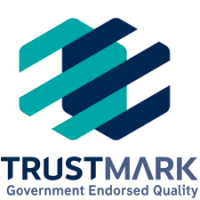Invasive plant species continue to pose significant environmental and public health challenges in the UK. While discussions often focus on Japanese Knotweed, there are numerous lesser-known but equally threatening invasive plants demanding the attention of surveyors, conservationists, and professionals working in the field. Join us for an informative Back-to-Basics Webinar covering the identification and management of these plants, including species that pose threats to human health and local ecosystems.
Led by Robert Mitchell, a seasoned invasive weed surveyor and Director of Conservation Land Services, this session promises insights not only on species identification but also on legislative updates and health precautions. Whether you’re a seasoned professional or newly acquainted with invasive plant management, this session is crafted to strengthen your understanding and confidence in dealing with these plants.
Why You Should Attend
This webinar offers a focused overview of key invasive herbaceous plants, including both well-known threats like Giant Hogweed and lesser-recognized but dangerous species such as Hemlock Water Dropwort. Here’s a snapshot of what will be covered:
- Giant Hogweed: An infamous giant among invasive plants, Giant Hogweed’s harmful sap can cause severe skin reactions, making it a priority for surveyors to identify and manage. Since it is also listed on Schedule 9 of the Wildlife and Countryside Act, it is regulated, and specific actions are required to control its spread.
- Hemlock: Although not on Schedule 9, Hemlock is toxic and invasive, capable of threatening both wildlife and human health. Surveyors should understand how to identify Hemlock accurately, given its resemblance to other harmless plants.
- Hemlock Water Dropwort: Perhaps the UK’s most poisonous plant, Hemlock Water Dropwort is notorious for its toxicity to both humans and animals. Despite its absence from Schedule 9, the potential harm it poses makes it essential for surveyors and environmental professionals to recognize it in the field.
- Variegated Yellow Archangel: Common and often missed in surveys, this plant’s invasiveness and spread in wooded areas underscore the need for awareness. Many professionals overlook it due to its visual similarity to non-invasive species.
- Field Horsetail: Known for its rapid spread and resilience, Field Horsetail can cause substantial physical damage, even breaking through tarmac. Despite its invasive nature, it’s not on Schedule 9, highlighting the need for practical, on-the-ground knowledge for proper control.
Key Takeaways from the Webinar
- Enhanced Plant Identification Skills: Participants will learn effective techniques for recognising these plants in various stages, environments, and seasons, improving survey accuracy.
- Understanding Legislative Nuances: Gain insight into the differences in legislative requirements for these plants, some of which are not on Schedule 9 but still pose substantial threats to biodiversity and infrastructure.
- Human Health Awareness: Learn essential health and safety information related to handling invasive plants, especially those toxic to humans, such as Giant Hogweed and Hemlock Water Dropwort.
Meet the Expert: Robert Mitchell
Leading the session is Robert Mitchell, an Invasive Weed Surveyor and Director of Conservation Land Services. Robert’s experience includes training surveyors through the Property Care Association (PCA) and serving as an examiner for the CSJK certification, along with extensive work with commercial clients, developers, and councils. His environmentally sustainable approach goes beyond focusing solely on Japanese Knotweed, encompassing a broader range of invasive plant management practices.
Register Now
This Going Back-to-Basics with Invasive Herbaceous Plants webinar will take place on Thursday, 31 October, from 9:00 am to 10:00 am. Secure your spot to deepen your knowledge of these plants, stay informed on current legislation, and learn practical identification techniques for professional or personal application.
Join us and equip yourself with the insights to tackle the challenges presented by invasive herbaceous plants in the UK, safeguarding both natural ecosystems and public health.









